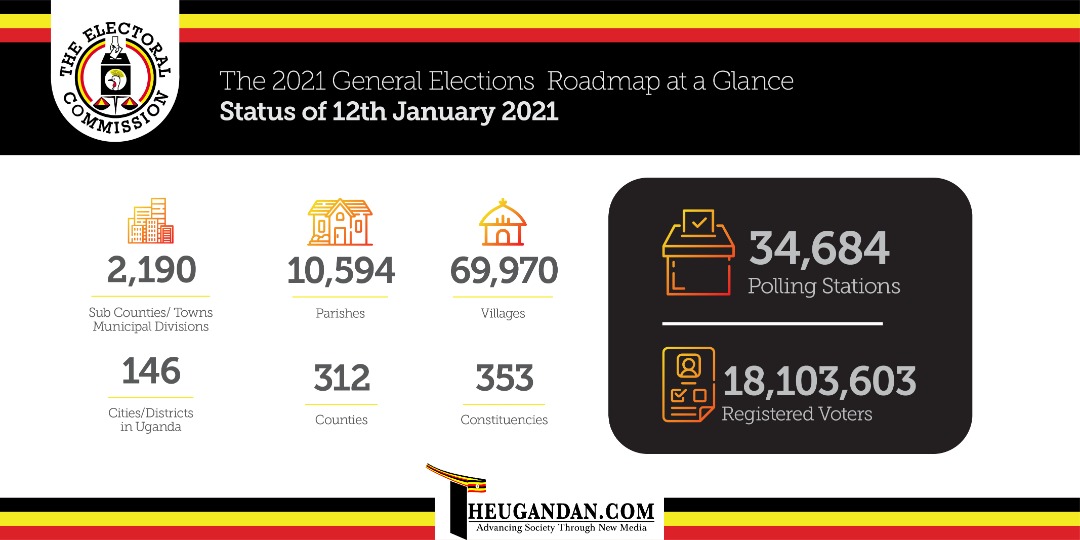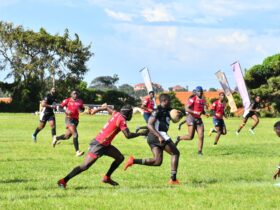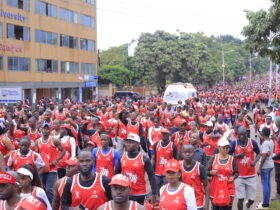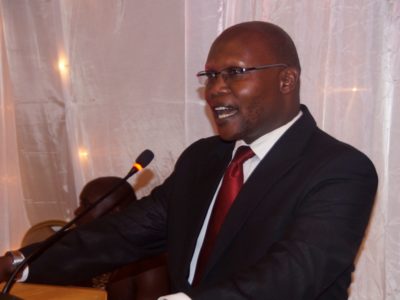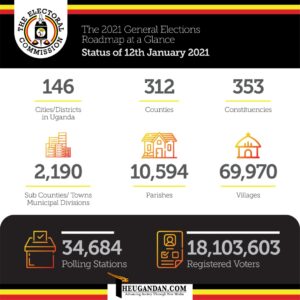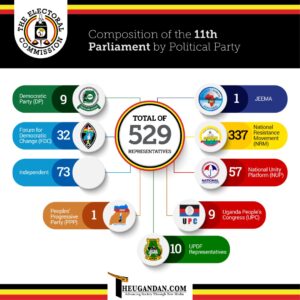Uganda has once again revised downwards its coronavirus national tally from 694 to 685 after deducting nine false positives.
The false positive cases were tested at Makerere University’s college of health science laboratory between June 3 and June 4 from the 50 samples according to the minister of Health Jane Ruth Aceng.
Aceng said a routine quality assurance procedure identified the discordance in some of the samples, and upon retesting at the Uganda Virus Research Institute, 9 cases were found to be false positives. Aceng attributed the discrepancies in laboratory results to mishandling of samples, which she said, is not uncommon in laboratory management – the reason why multiple confirmatory tests are done on the same samples.
Aceng said this was an isolated error and doesn’t affect all the other tests that have been conducted at Makerere or other eight laboratories testing COVID-19 samples. According to Aceng, the errors can be due to limitations of the test kits, error before analysis, error during sample analysis or errors after analysis.
It is the second time Uganda is revising downwards its confirmed coronavirus cases. On May 20, President Yoweri Museveni directed revision of Uganda’s confirmed case count. She ordered the ministry to deduct foreign truck drivers, arguing that they were just transiting through Uganda. At the time, Uganda’s cases stood at 264 and after deductions, the caseload dropped to 145.
Aceng further said there are still some foreign nationals admitted in Uganda’s isolation facilities hence distorting the country’s true coronavirus figures. She also said they have formally communicated to the World Health Organisation (WHO) which continues to post different figures from those displayed by government.
Aceng also explained the recent change of confirmed results reporting time from between 10 pm and 12.00 am to 11 am, saying it was due to the increase in the number of samples being collected and tested.
The minister said Uganda has entered the third stage of COVID-19 infection which means an increase in community spread. According to WHO, there are four stages of coronavirus disease. Aceng said so far, 33 districts have reported at least one positive case raking up a total of 243 community cases.
Stage one is when a country is getting imported cases, stage two is when the country starts ti get local transmissions from travellers from global hotspots while stage three is deemed the most deadly stage by experts – with cases reported everywhere with no trace of how exactly they could have got infected.
In stage three, experts say, undiagnosed cases infect others, making it difficult for doctors to trace, isolate and treat patients. As a result, infection clusters spiral out of control and turn into epidemics. So far, China has been the only country to experience stage 4, where the spread is practically uncontrollable and there are many major clusters of infection all over the country.
Aceng said so far 234 contact and alert cases have been reported from 33 districts – with Amuru and Kyotera reporting the highest and most sustained transmissions. To date, Amuru has 52 cases and Kyotera 47. Other cases are spread out among refugees at 51, frontline health workers 27, UPDF 8, police 2 and immigration officers 2.
Out of the total 685 cases, 47 are returnees from abroad, 234 contact and alerts while 337 are truck drivers. A total of 1,197 truck drivers have so far tested positive, of which 337 are Ugandans while 780 are foreign truckers from neighbouring countries.
These include 444 Kenyans, 222 Tanzanians, 9 South Sudanese, 18 Congolese, 2 Ethiopians, 12 Rwandans, 23 Burundians, 44 Eritreans and 6 Somalis. At least 699 foreign truckers have been handed back to their respective countries.
PATIENT ADMISSIONS
Mulago hospital has the most COVID-19 cases with 249 patients, Entebbe has 111, Gulu hospital 37, Arua hospital 24, Masaka hospital 23, Mubende hospital 21 while Lira hospital has 20. Jinja hospital has 18, Mbale 15, Mbarara 11, Soroti 13, Hoima 13 among others.
Aceng said the ministry has prepared 3,200 isolation beds and 378 Intensive Care Unit (ICU) beds in national, regional, general hospitals and health centre IVs. At Mulago hospital, another 300 beds have been added to the previous 100 beds dedicated to COVID-19 treatment.
She said they are going to set up mobile hospitals with 300 beds each to prepare for the worst-case scenario of 40,000 positive cases. Aceng claimed that government has imported 108 ventilators and are currently being installed in various facilities around the country to add to the previous 75 ventilators.
REGULAR HEALTH SERVICES
Contrary to popular belief that the COVID-19 lockdown gravely affected the provision of regular health services, the minister said tuberculosis, malaria and HIV services seem to have remained uninterrupted by the lockdown measures as patients continued to get their drugs uninterrupted.
This is contrary to various civil society organisation and media reports that reported a disruption in the supply of drugs due to a ban on private and public transport.
The number of diagnosed and treated malaria cases, Aceng said, increased by 56 per cent between January and April 2020 compared to the same period last year. On the other hand, antenatal attendance decreased by 7 per cent between March and April 2020 compared to the same period in 2019 mostly in northern and south-west regions.
To avoid disruption of regular health services, she said, general hospitals and health centre IVs have been excluded from treating COVID-19 cases.
******
URN
